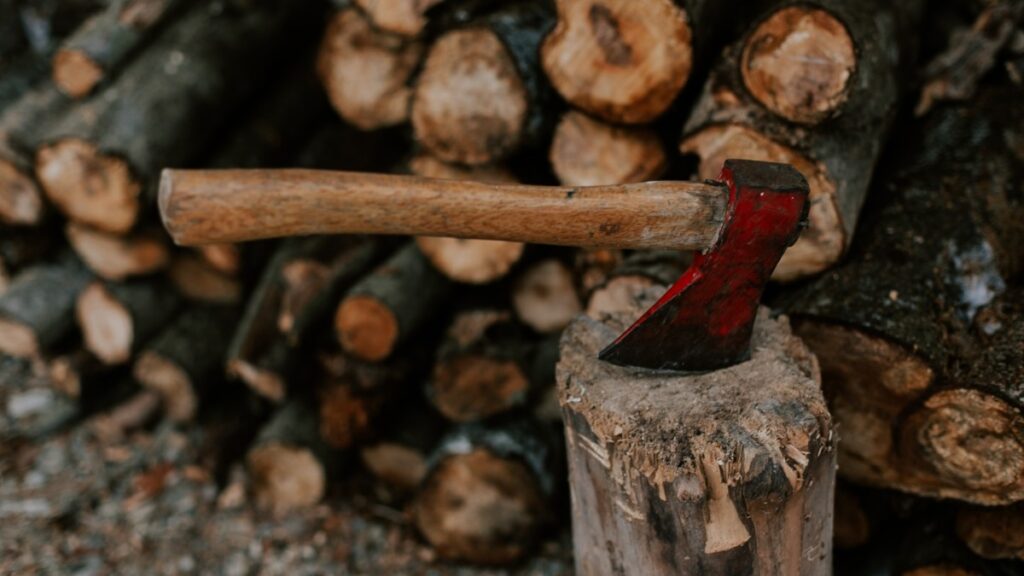The Ultimate Guide to Wood Splitting Axes: Choosing the Right Tool for the Job

When it comes to splitting wood, having the right tool can make all the difference. Whether you’re preparing for winter or tackling a DIY project, understanding the various types of axes can help you choose the best one for your needs. In this guide, we’ll explore the main types of axes used for splitting wood, detailing their features, uses, and advantages.
1. Splitting Axe
Overview
The splitting axe is specifically designed for splitting logs along the grain. Its head is wider and heavier than that of a standard felling axe, allowing it to wedge itself into the wood more effectively.
Features
- Blade Shape: The blade is typically thick and sharp with a wide edge that aids in splitting.
- Weight: Generally weighs between 4 to 6 pounds, providing the necessary heft for splitting.
- Length: Usually around 30 to 36 inches, giving you enough leverage for powerful swings.
Best Uses
Ideal for splitting medium to large logs, the splitting axe excels in backyard wood preparation and is great for making firewood.
Advantages
- Efficiently splits logs with minimal effort.
- Designed specifically for this task, enhancing safety and effectiveness.
2. Felling Axe
Overview
While primarily intended for cutting down trees, the felling axe can also be used for splitting smaller logs. Its design is more suited for cutting, but it can serve multiple purposes.
Features
- Blade Shape: The blade is thinner and more tapered than that of a splitting axe, designed for cutting rather than splitting.
- Weight: Typically lighter than a splitting axe, around 3 to 5 pounds.
- Length: Often ranges from 28 to 36 inches.
Best Uses
Best for felling trees and limbing, the felling axe can also handle smaller logs but is less effective for larger, tougher wood.
Advantages
- Versatile tool for multiple tasks, reducing the need for several different tools.
- Good for users who require both felling and light splitting capabilities.
3. Splitting Maul
Overview
The splitting maul is a heavier tool designed specifically for the toughest splitting jobs. With a blunt head, it is perfect for handling larger logs that would be difficult for an axe to split.
Features
- Blade Shape: The head is wide and heavy with a blunt edge, resembling a sledgehammer more than a traditional axe.
- Weight: Typically weighs between 6 to 10 pounds.
- Length: Usually around 32 to 36 inches, providing good leverage.
Best Uses
Ideal for splitting large logs, particularly hardwoods, the splitting maul can make quick work of tough materials.
Advantages
- Extremely effective for large jobs due to its weight and design.
- Can split larger logs with fewer swings, making it time-efficient.
4. Hatchet
Overview
A hatchet is a small, versatile tool that can be used for various tasks, including splitting small pieces of wood and kindling. Its compact size makes it easy to handle and transport.
Features
- Blade Shape: A smaller, lighter blade, often with a sharper edge.
- Weight: Generally weighs between 1 to 3 pounds.
- Length: Typically ranges from 12 to 18 inches.
Best Uses
Great for camping, kindling, and small woodwork projects, a hatchet can be used in various settings and tasks.
Advantages
- Highly portable and easy to use for smaller jobs.
- Multi-functional, making it a great addition to any toolkit.
5. Log Splitter
Overview
While not a traditional axe, powered log splitters are becoming increasingly popular for their efficiency and power. These machines can split large quantities of wood quickly.
Features
- Power Source: Can be electric or gas-powered, allowing for high output with minimal physical effort.
- Design: Uses hydraulic pressure to split logs, making it suitable for heavy-duty tasks.
Best Uses
Ideal for those who need to split large amounts of wood regularly or for commercial use, powered log splitters can handle very large logs with ease.
Advantages
- Significant time-saver compared to manual splitting.
- Reduces physical strain, making it accessible for all users.
Conclusion
Choosing the right axe for splitting wood depends on the size of the logs you’re working with and the specific tasks at hand. From the heavy-duty splitting maul to the versatile hatchet, each tool has its strengths and ideal uses. By understanding these differences, you can select the best axe or tool for your wood-splitting needs, making your job easier and more efficient. Happy splitting!
